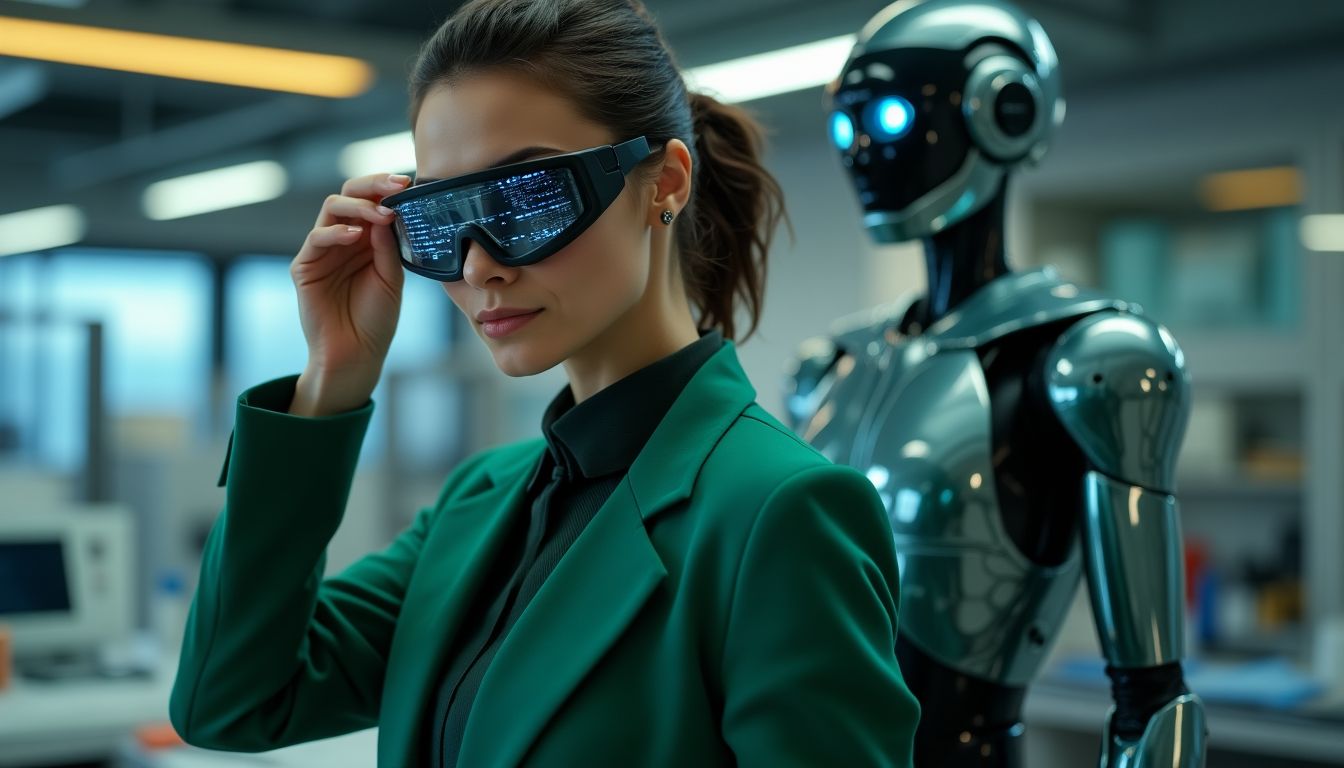In the rapidly evolving world of robotics, one company is quietly but powerfully rising through the ranks, capturing the imagination of tech enthusiasts and experts alike. That company is Engineered Arts, a pioneering force in the development of humanoid robots. Founded in October 2023 by Zha Tongyang, this relatively young company has already made waves with its groundbreaking innovations. In July 2024, Engineered Arts launched its first bipedal robot, the SA1, followed by the full-size, general-purpose humanoid robot, the SEO1, in October. These robots have taken the world by storm, achieving what many thought was impossible: a human-like gait.
Walking like a human is one of the most complex challenges in robotics. Until recently, only Boston Dynamics, a leader in the field, had managed to create robots that could mimic human movement convincingly. Other robots, like Tesla’s Optimus, struggled with this task, often looking stiff and unnatural. But Engineered Arts has shattered that barrier, creating robots that move with a fluidity and grace that’s almost indistinguishable from human motion.
The Uncanny Valley: When Robots Look Too Good to Be True
When Engineered Arts released a video showcasing their humanoid robot’s capabilities, the reaction was nothing short of disbelief. The robot walked, ran, and even performed push-ups with such precision that many viewers thought it was CGI. Even industry experts were skeptical. Dr. Jim Fan, a senior research manager at NVIDIA and co-founder of the General Robotics and Physical AI project, initially questioned the authenticity of the footage. He tweeted: “Hey everyone, this was allegedly shot in Shenzhen. Is this real? Can someone verify?”
This skepticism wasn’t unfounded. In a world where deepfakes and AI-generated content are becoming increasingly sophisticated, it’s hard to tell what’s real and what’s not. But Dr. Fan soon confirmed that the footage was indeed real, citing reliable sources and explaining that the robot’s movements were made possible through NVIDIA’s Isaac Sim and reinforcement learning techniques. This validation not only cemented Engineered Arts’ reputation but also highlighted how far the field of robotics has come.
What Makes Engineered Arts’ Robots So Special?
The secret to Engineered Arts’ success lies in their approach to robot design and training. Unlike traditional methods, where engineers build robots and then try to simulate their movements, Engineered Arts designs its robots specifically for simulation. This forward-thinking approach ensures that the robots perform well in virtual environments, making them easier to train using AI algorithms.
Another key factor is the use of human movement data. By capturing real human movements, such as walking and running, and applying them to their robots, Engineered Arts creates machines that mimic humans with astonishing accuracy. This process, known as motion capture, is commonly used in movies and video games but has now found a new application in robotics.
Here’s how it works:
- Training the Robot: The robot is first trained to copy human movements.
- Adapting the Movements: These movements are then adapted to match the robot’s physical structure.
- Refining the Behavior: Penalties are applied when the robot moves in ways that are unlike humans, encouraging it to adopt more natural motions.
Combine this with powerful simulation tools like NVIDIA’s Isaac Sim, and you have a recipe for success.
The Future of Robotics: China’s Rising Dominance
Engineered Arts isn’the only company pushing the boundaries of robotics. Another standout is Unitree Robotics, whose G1 robot has demonstrated remarkable agility and versatility. Like Engineered Arts’ creations, the G1 can run, walk, and navigate various terrains with ease. This rapid progress suggests that China is on track to become a global leader in robotics, potentially surpassing the United States in this field.
China’s focus on robotics isn’t just about technological dominance; it’s also a response to societal challenges. With an aging population and a declining birth rate, robots could play a crucial role in addressing labor shortages and providing care for the elderly. In April 2025, Beijing will host a half-marathon featuring robots from over 20 companies, showcasing the country’s commitment to advancing AI and robotics.
From Push-Ups to Front Flips: The Limitless Potential of Robotics
One of Engineered Arts’ most impressive achievements is teaching their robot to perform a front flip. While this might seem like a stunt, it’s actually a monumental milestone in robotics. Front flips are far more complex than backflips, requiring precise balance, rapid weight shifting, and coordinated limb movements. The fact that Engineered Arts’ robot can execute this maneuver speaks volumes about its hardware and software capabilities.
But this is just the beginning. As robots become more advanced, their potential applications will expand exponentially. From healthcare and manufacturing to entertainment and beyond, the possibilities are endless. Imagine a world where robots can assist in surgeries, build infrastructure, or even perform intricate dance routines alongside humans.
Why You Should Pay Attention to Robotics Now
Robotics is no longer the stuff of science fiction. It’s here, and it’s evolving at an unprecedented pace. Companies like Engineered Arts are showing us what’s possible, and the innovations they’re bringing to the table are only the tip of the iceberg. Whether you’re a tech enthusiast, an industry professional, or just someone curious about the future, now is the time to get involved.
Want to stay ahead of the curve? Check out these cutting-edge robotics tools on Amazon and start exploring the world of AI and automation. And if you’re passionate about technology and innovation, why not join the iNthacity community? Become a permanent resident of the “Shining City on the Web” and be part of the conversation that’s shaping the future.
Final Thoughts: What Does the Future Hold?
As we look ahead to 2030 and beyond, it’s clear that robotics will play an increasingly important role in our lives. But with great power comes great responsibility. How do we ensure that these advancements benefit society as a whole? What ethical considerations must we take into account as robots become more integrated into our daily lives? These are the questions we need to address as we navigate this brave new world.
So, what’s your take on the future of robotics? Do you think humanoid robots like those from Engineered Arts will revolutionize industries, or are there challenges we’re overlooking? Share your thoughts in the comments below, and let’s continue this conversation. Let’s make iNthacity a hub for innovation, creativity, and forward-thinking ideas.
Wait! There's more...check out our gripping short story that continues the journey: Project Prometheus
Disclaimer: This article may contain affiliate links. If you click on these links and make a purchase, we may receive a commission at no additional cost to you. Our recommendations and reviews are always independent and objective, aiming to provide you with the best information and resources.
Get Exclusive Stories, Photos, Art & Offers - Subscribe Today!


























Post Comment
You must be logged in to post a comment.